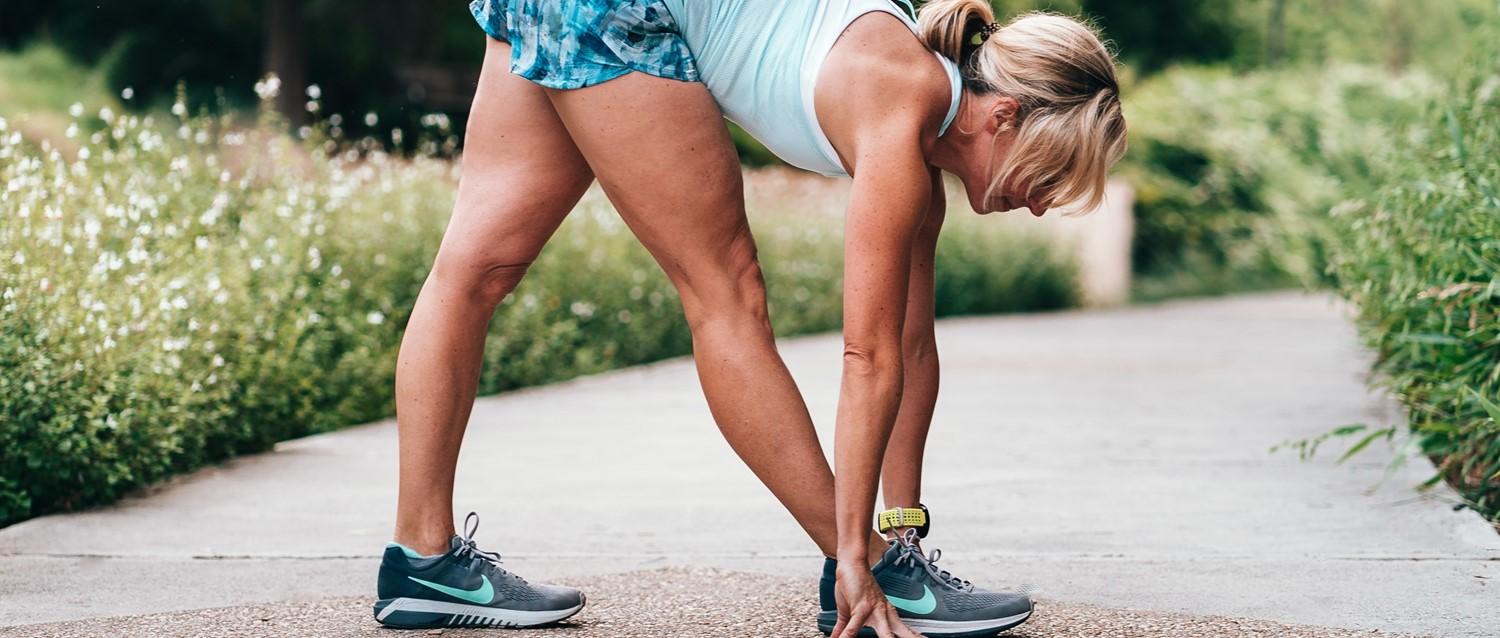
How to run a 10k with no experience
Peer reviewed by Dr Sarah Jarvis MBE, FRCGPLast updated by Georgia GallantLast updated 23 Oct 2018
Meets Patient’s editorial guidelines
- DownloadDownload
- Share
- Language
- Discussion
At the beginning of the year, I was clinging on to my New Year's resolution of getting in shape and somehow signed myself up for a 10 kilometre race around Kew Gardens in London. What could go wrong?
For one, I had no experience and no idea where to start. Luckily, I sought advice from some experts. Pairing this with my own training experience, here are a few tips to see you through your first 10k.
In this article:
Continue reading below
Find your motivation
Write down what you're running for and put it where you will see it. Having a visual reminder will spur you on during the days you want to give up.
If you choose to run for a charity, their team will usually check up on you throughout your training and will be on hand to offer training tips and advice.
If you don't want to run alone, ask a friend to run with you. If you can’t convince them, joining your local Parkrun is a great way to build up your confidence and meet fellow runners of all levels for a Saturday morning 5k - and it's totally free.
Download an app
NHS England's free Couch to 5k app is a great resource. Using interval running (walk for one minute, run for one minute) to build up your stamina, you will be running a 5k in just nine weeks if you stick with it. You're halfway there already!
Free apps like Strava allow you to track your progress and map your run. You can also connect with others for training tips, for routes to run, or to organise to meet up and run together. A recent study showed how running makes you happier, more confident and more motivated when using apps such as these.
Olympic running coach Andy Hobdell recommends watching The Running Channel, a YouTube channel made by runners for runners, with new advice and how-to videos every week.
Continue reading below
Remember to stretch
This may seem like an obvious one, but it's easy to forget when you're just starting out.
Courtney Kipps, consultant in Sport and Exercise Medicine at the Institute of Sport Exercise Health (ISEH) says: "The best way to prepare for a run is to do an active warm-up. Everyone is different but a jog around the block, a few squats, or some heel raises are simple exercises to start off and will get your muscles moving."
Knowing the difference between stiffness and pain will make sure you don't cause any long-term injuries. Delayed onset muscle soreness (DOMS) is common and should subside.
"But pain which does not settle within a day or two, pain which seems to be getting worse, pain which keeps you awake at night, or pain which is associated with swelling or bruising is cause for concern and should be reviewed with your GP," Kipps cautions.
Eat well to train well
Patient's nutritionist Rose Constantine-Smith advises that "eating a balanced diet which is high in vegetables, healthy fats and proteins is important to support your exercise effort". Sugary snacks won't provide you with sufficient energy.
"If you haven't eaten for a while before training, I'd suggest a snack containing protein, such as a shake or a couple of hard-boiled eggs paired with something easy to digest which will provide a quick release of energy like a banana, a couple of dates or apricots," she reveals.
It’s important to refuel post-training to enable the muscles to repair and to support a healthy immune system. If you're training an hour or so after breakfast, try to eat something that provides slow-releasing energy. If you are eating straight after a run, make sure you include a good source of protein and carbohydrates so you don't need to snack later.
Always remember to take a bottle of water with you. Try to avoid energy drinks during training - they have some benefits if you are exercising for over an hour but otherwise water is sufficient.
And you might want to ditch the booze. I decided to stop drinking alcohol in the days leading up to a run as I found it was having a negative effect on my performance and recovery.
Continue reading below
Comfort over style
You don't have to have all the latest running gear; just wear something that you will be comfortable in. Make sure your clothes are weather-appropriate if you're running outside, as you don't want to overheat or freeze! Thin layers that are easy to wrap around your waist are better in colder weather.
I would recommend going to a running shop for a free gait analysis - essentially, a running machine that assesses how you walk and run. This enables the staff to recommend the right running shoes for your feet.
Make sure whatever shoes you wear they have good shock absorbency - otherwise the pressure on your knees will lead to injuries like shin splints, disrupting training and potentially becoming a long-term problem.
Set yourself a routine
Try to run two to three times a week, slowly building up the length or intensity. Activities such as yoga can also help with core strength and balance. It may be at a slower pace but it's still a workout!
Hobdell suggests swimming and cycling/spinning alongside running, "as they're low-impact and can allow you to squeeze a bit more training in without overloading your body and potentially getting injured".
I found it difficult to maintain an exercise routine around life commitments at first, but it won't be long until running is just as important as your other priorities. Try to plan for the week ahead on a Sunday night. If you know that running in the morning isn't realistic for you, set aside 30 minutes during the evening.
Conversely, exercising regularly will actually give you more energy.
"Most people are amazed at how much more productive they are on a day when they've done exercise," says Hobdell.
So the days where making time for running feels like a challenge will become fewer, I promise.
Don't put too much pressure on yourself
Don't be disheartened by a bad run and if you can't make a midweek run don't be too hard on yourself - set aside some time at the weekend or try to go a bit further on your next outing.
Remember that rest is just as important as exercise and pushing yourself after an injury can cause more damage. Kipps suggests getting any injuries checked out with your GP or a physiotherapist, as "once you have a diagnosis, you can plan your recovery with confidence".
Try to run outside
Your 10k won't be on a running machine so try to run on the road and in all weathers! Running on different terrain will help you to build strength in your legs.
"Different running styles will have a big impact on how it feels to train on a treadmill, with some people finding it much easier, and some really struggling to run paces they could run outside," says Hobdell.
If you are training on a treadmill, he advises to "set the gradient to 1%, and adjust the speed by feel rather than running to a set pace" in order to use it effectively.
I found that my asthma was worse running on main roads, most likely due to pollution. If you're a sufferer, stick to parks, woodland or quieter residential areas and make sure you're stocked up on hay fever tablets or inhalers to avoid an attack.
Have fun!
On race day, any anxiety or bad feeling you had towards running disappears - at the start and finish line at least! The positive atmosphere will help get you through the race, as well as any friends or family that come to cheer you on.
Good luck!
Patient picks for Exercise and physical activity

Healthy living
What is somatic exercise? Exploring the mind-body connection
Introduced in the 1970s by philosopher Thomas Hanna, somatics refers to a discipline that explores the relationship between the mind and body though movement. Somatic exercise is a sensory practice that promotes mindful movements to enhance your awareness of your body’s internal sensations.
by Victoria Raw

Healthy living
Will future towns and cities focus on fitness?
In a 2017 speech, Baroness Tanni Grey-Thompson accused UK town planning laws of favouring the opening of fast food outlets over new gyms and fitness hubs. The Paralympian is undoubtedly on to something, but it will take more than the shuttering of fried chicken shops to tackle the growing public health crisis in our towns and cities.
by Ross Davies
Continue reading below
Article history
The information on this page is peer reviewed by qualified clinicians.
23 Oct 2018 | Latest version

Ask, share, connect.
Browse discussions, ask questions, and share experiences across hundreds of health topics.

Feeling unwell?
Assess your symptoms online for free
Sign up to the Patient newsletter
Your weekly dose of clear, trustworthy health advice - written to help you feel informed, confident and in control.
By subscribing you accept our Privacy Policy. You can unsubscribe at any time. We never sell your data.